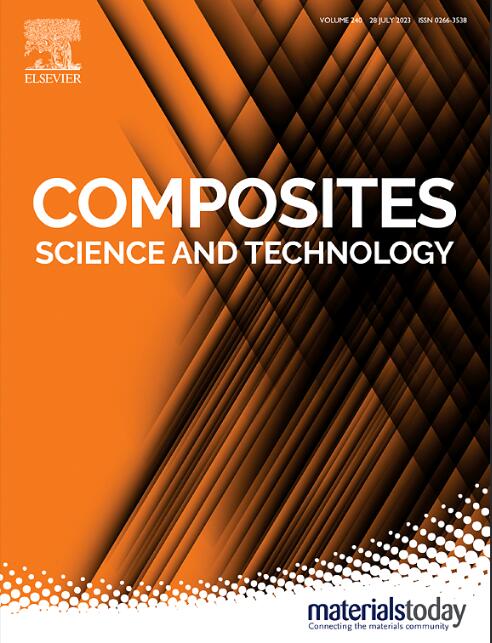Cartilage-inspiration for constructing photothermal-driven, weather-resistant, self-healing and long-term anti-corrosion dual-layer coating
IF 8.3
1区 材料科学
Q1 MATERIALS SCIENCE, COMPOSITES
引用次数: 0
Abstract
The economic and social damages caused by steel corrosion are enormous, and the development of efficient and long-term anti-corrosion coatings has become a key challenge. The aim of this study was to develop a novel, photothermal self-repairing, intelligent, weather resistance, and anti-corrosion composite coating. In this study, cartilage-inspired tannic acid (TA)-modified MXene multifunctional filler (MT) was prepared by a hydrothermal method and combined with self-healing polyurethane (PU-SS-Salen-Ni) to form a topcoat, while epoxy resin (901) was selected as the primer. The network structure of MT endowed the polyurethane with highly efficient photo-thermal conversion ability, which could increase the local temperature of the material to more than 80 °C within 60s. It also gives the coating excellent weathering resistance. Thanks to the synergistic effect of the active anticorrosive properties of MXene, the passive anticorrosive effect of tannic acid, and the self-healing polyurethane epoxy double-layer coating on the substrate, the composites exhibited excellent anticorrosive properties (|Z|f = 0.01Hz > 1 × 1011 Ω cm2) after 180 days of immersion in 3.5 % NaCl solution. Therefore, the present work successfully realized polyurethane materials with active/passive corrosion protection and self-healing functions through MT networks, and innovatively introduced and studied the organic double-layer coating structure, which provides a new solution in the field of corrosion prevention, weathering, and photo-thermal conversion self-healing.

软骨-灵感用于构建光热驱动,耐候性,自修复和长期防腐的双层涂层
钢铁腐蚀造成的经济和社会损失是巨大的,开发高效、长效的防腐涂料已成为一项关键挑战。本研究的目的是开发一种新型的、光热自修复的、智能的、耐候性的、防腐蚀的复合涂层。本研究采用水热法制备了软骨型单宁酸(TA)改性MXene多功能填料(MT),并与自愈聚氨酯(PU-SS-Salen-Ni)结合形成面漆,底漆选用环氧树脂(901)。MT的网状结构赋予了聚氨酯高效的光热转化能力,可以在60秒内将材料的局部温度提高到80℃以上。它还使涂层具有优异的耐风化性。由于MXene的主动防腐性能、单宁酸的被动防腐性能和基材上自愈性聚氨酯环氧双层涂层的协同作用,复合材料具有优异的防腐性能(|Z|f = 0.01Hz >;1 × 1011 Ω cm2),在3.5% NaCl溶液中浸泡180天后。因此,本工作通过MT网络成功实现了具有主动/被动防腐和自愈功能的聚氨酯材料,并创新性地引入和研究了有机双层涂层结构,为防腐、风化、光热转换自愈等领域提供了新的解决方案。
本文章由计算机程序翻译,如有差异,请以英文原文为准。
求助全文
约1分钟内获得全文
求助全文
来源期刊

Composites Science and Technology
工程技术-材料科学:复合
CiteScore
16.20
自引率
9.90%
发文量
611
审稿时长
33 days
期刊介绍:
Composites Science and Technology publishes refereed original articles on the fundamental and applied science of engineering composites. The focus of this journal is on polymeric matrix composites with reinforcements/fillers ranging from nano- to macro-scale. CSTE encourages manuscripts reporting unique, innovative contributions to the physics, chemistry, materials science and applied mechanics aspects of advanced composites.
Besides traditional fiber reinforced composites, novel composites with significant potential for engineering applications are encouraged.
 求助内容:
求助内容: 应助结果提醒方式:
应助结果提醒方式:


